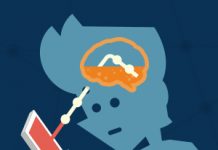[This article originally appeared in its entirety on the Psychology Today website. Visit the website to read the entire article.]
According to the CDC in the landmark 2014 report “Bullying Surveillance Among Youths,” estimates of bullying prevalence range widely, from 13 to 75 percent. Bullying presents a similar challenge as other forms of abuse and neglect, but is unique in key ways—it is so much a part of our culture, normalized and tolerated, even rewarded and admired as strength and power.
Parents of kids who are bullied will tell you that getting recognition and help is often an uphill battle. Teachers and staff are inconsistently trained, school administrators are loathe to recognize issues, whistle-blowers get scapegoated, families get ostracized, and victims get blamed.
Here’s a story a parent shared: After much dismay and a few years of seeing various school counselors, administrators and medical specialists to investigate a variety of issues without getting a solid answer, this family took their son to a renowned pediatric mental health specialist, explicitly to assess for psychological and physical effects of bullying. It had become evident in the preceding months that bullying had been going on, but had been downplayed and dismissed. The expert 1) didn’t assess for bullying and 2) gave an individual diagnosis only, highlighting medication treatment even when the specialist had been informed that traumatic experiences were a key part of the picture. How can an expert ignore bullying, even when asked to consider it?
Anti-bullying programs are beginning to get more traction, culture is shifting, and laws and surveillance are becoming more routine. There are two modes of bullying, direct and indirect. Direct includes physical behaviors, like shoving someone, as well as spoken and written aggression. Indirect includes behaviors such as spreading rumors about the target that are of a false, misleading and/or harmful nature. The types of bullying include physical, verbal, relational, and damage to property, including theft. Bullying is repetitive.
The consequences of bullying are profound. It can contribute to the development of depression, anxiety, and low self-esteem, alcohol and substance misuse, aggression, and risk for involvement in crime. Bullying can increase emotional distress and suicidal thinking. Research has connected bullying with social anxiety.
Bullying can take a physical toll. It can change physiology due to chronic stress, raising cortisol and potentially affecting brain and social/psychological development. It is also associated with decreased academic performance. Bullying can extend into adult relationships and professional life, where it is often brushed under the rug or worse, becomes a routine part of the day. It often involves bystanders who do nothing to stop it.
Authors of the current study, “Associations between exposure to childhood bullying and abuse and adult outcomes in a representative national US sample” (Sweeting, Garfin, Holman and Silver, 2020), designed broad-based research on bullying, abuse, neglect and various outcomes in adulthood.
Read about the study and the findings on the Psychology Today website.











